Abstract
The introduction of standardised data-collection forms and computer-aided diagnosis has been found to be associated with improved diagnosis and management of patients with acute abdominal pain. The mechanism by which such benefits accrue has been the subject of some controversy. Detailed analysis of 5193 patients from one hospital shows that the major benefit from such diagnostic aids was the accurate early diagnosis of non-specific abdominal pain by senior house officers in the accident and emergency department; this in turn led to fewer admissions and fewer operations with negative findings. Clinical data about patients with acute abdominal pain should be recorded on structured information sheets by junior doctors and early positive diagnosis should be encouraged before decisions affecting the patient's management are made. Improved computer support may confer further benefits.
Full text
PDF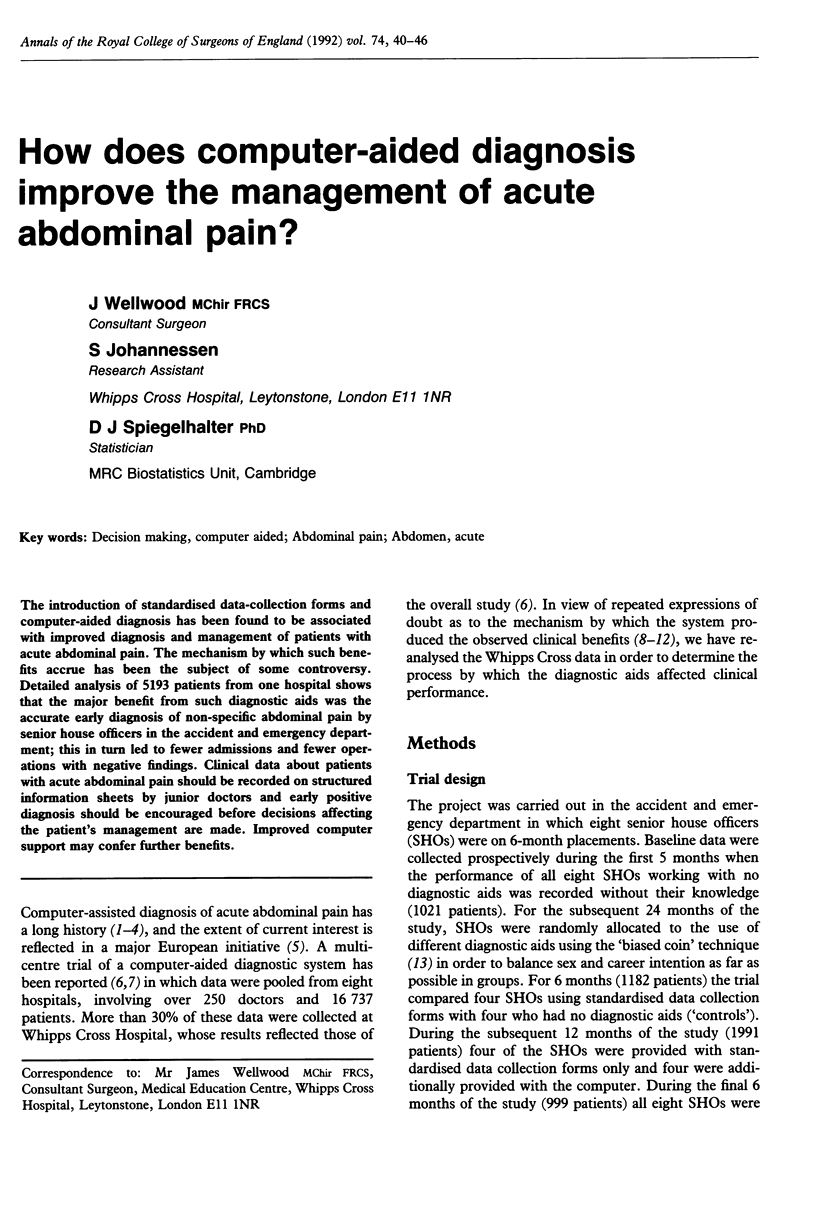

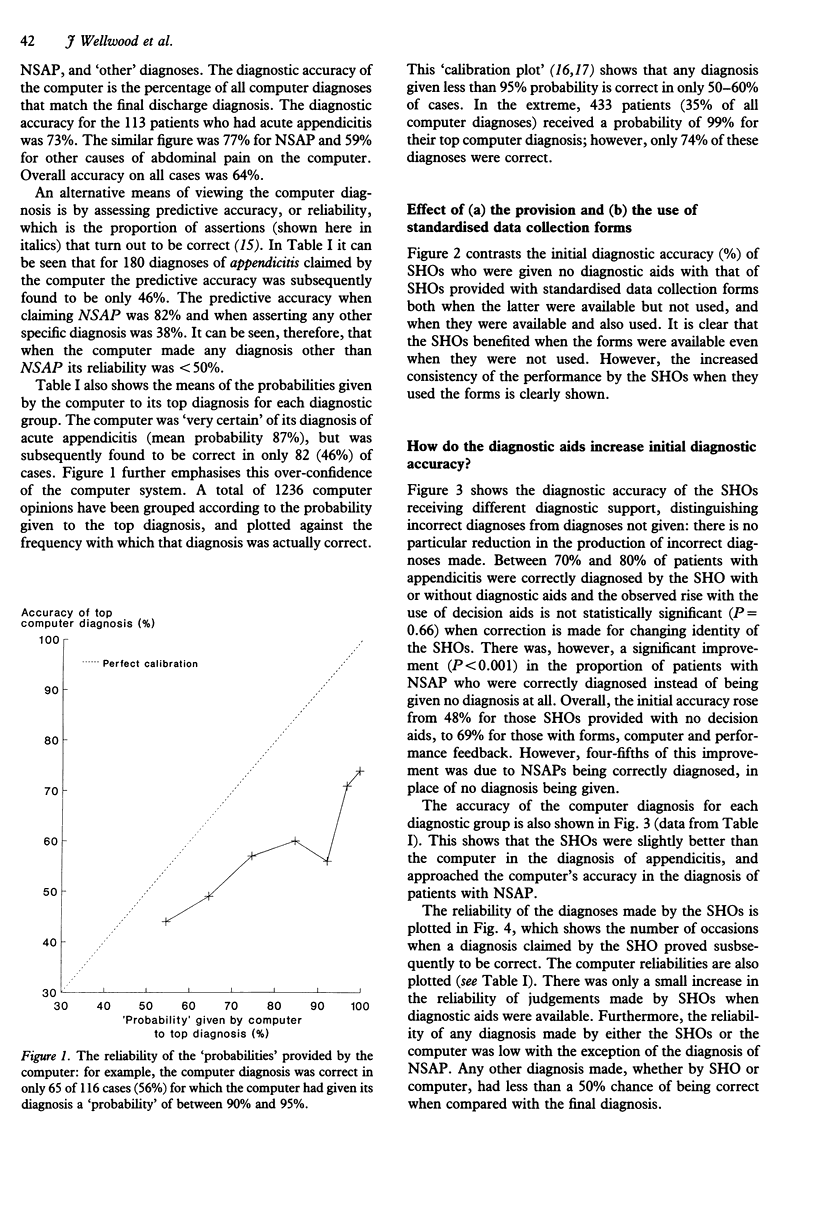
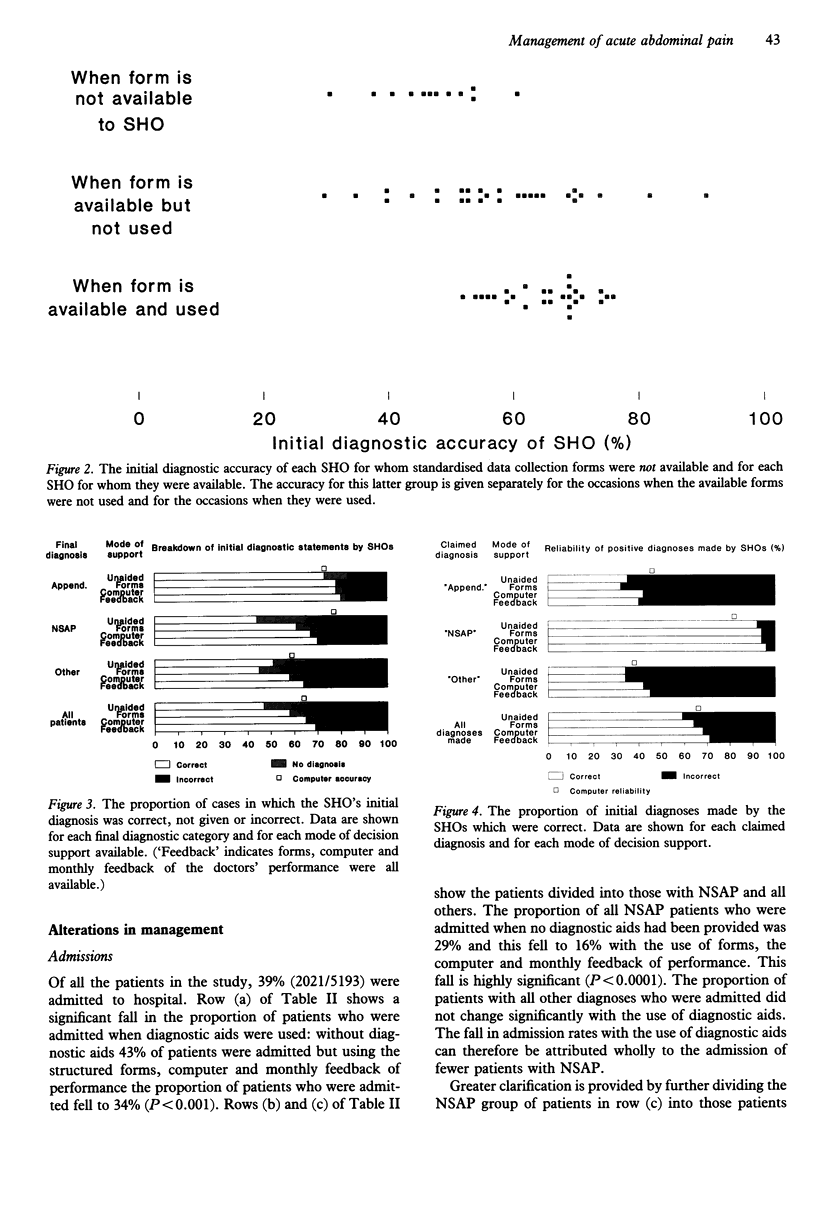
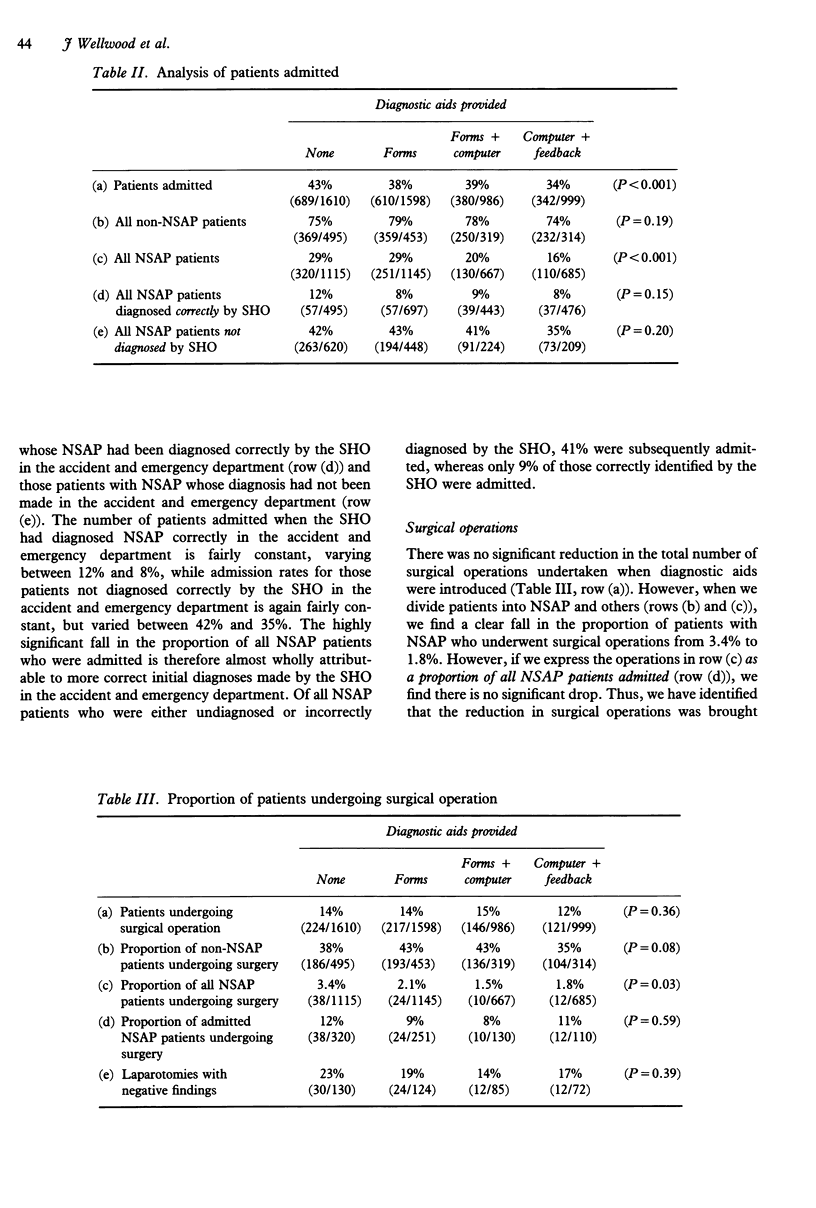
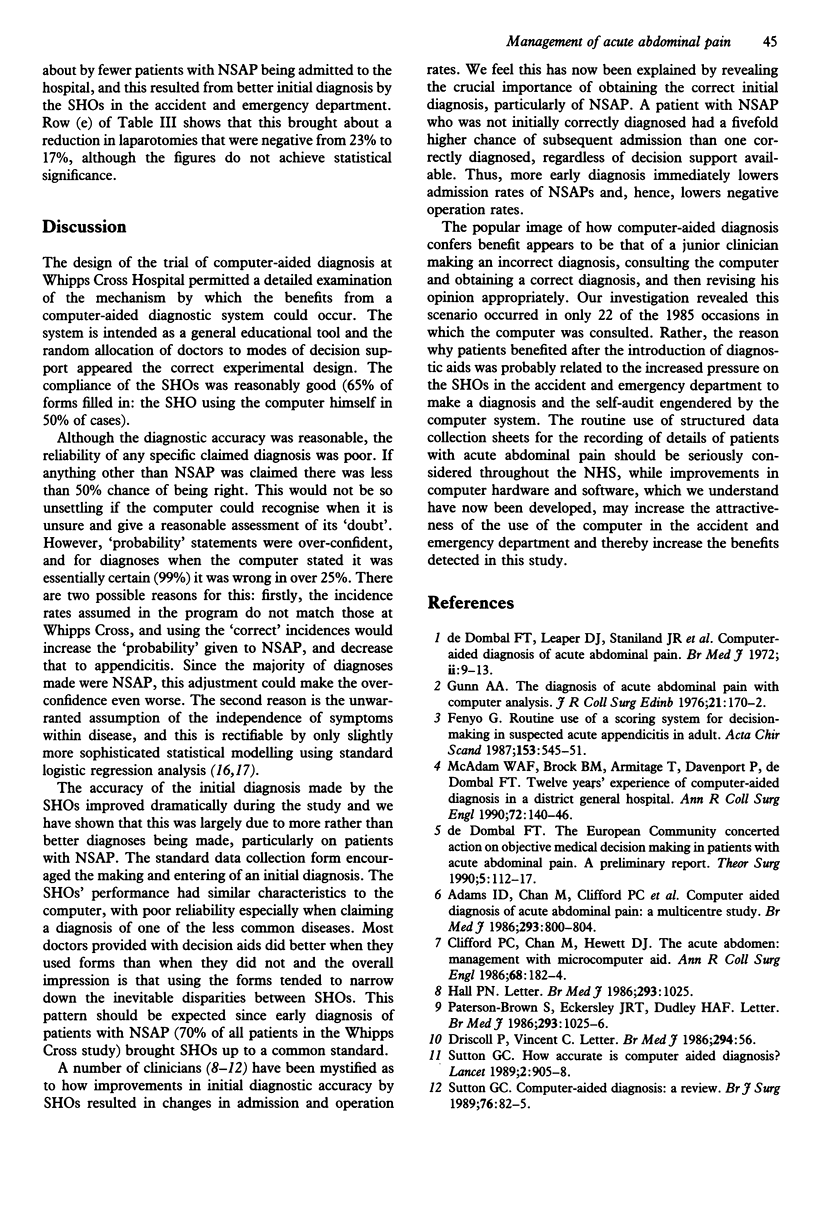

Selected References
These references are in PubMed. This may not be the complete list of references from this article.
- Adams I. D., Chan M., Clifford P. C., Cooke W. M., Dallos V., de Dombal F. T., Edwards M. H., Hancock D. M., Hewett D. J., McIntyre N. Computer aided diagnosis of acute abdominal pain: a multicentre study. Br Med J (Clin Res Ed) 1986 Sep 27;293(6550):800–804. doi: 10.1136/bmj.293.6550.800. [DOI] [PMC free article] [PubMed] [Google Scholar]
- Clifford P. C., Chan M., Hewett D. J. The acute abdomen: management with microcomputer aid. Ann R Coll Surg Engl. 1986 Jul;68(4):182–184. [PMC free article] [PubMed] [Google Scholar]
- Computer aided diagnosis of acute abdominal pain. Br Med J (Clin Res Ed) 1986 Oct 18;293(6553):1025–1026. doi: 10.1136/bmj.293.6553.1025-d. [DOI] [PMC free article] [PubMed] [Google Scholar]
- Fenyö G. Routine use of a scoring system for decision-making in suspected acute appendicitis in adults. Acta Chir Scand. 1987 Sep;153(9):545–551. [PubMed] [Google Scholar]
- Gunn A. A. The diagnosis of acute abdominal pain with computer analysis. J R Coll Surg Edinb. 1976 May;21(3):170–172. [PubMed] [Google Scholar]
- McAdam W. A., Brock B. M., Armitage T., Davenport P., Chan M., de Dombal F. T. Twelve years' experience of computer-aided diagnosis in a district general hospital. Ann R Coll Surg Engl. 1990 Mar;72(2):140–146. [PMC free article] [PubMed] [Google Scholar]
- Seymour D. G., Green M., Vaz F. G. Making better decisions: construction of clinical scoring systems by the Spiegelhalter-Knill-Jones approach. BMJ. 1990 Jan 27;300(6719):223–226. doi: 10.1136/bmj.300.6719.223. [DOI] [PMC free article] [PubMed] [Google Scholar]
- Spiegelhalter D. J. Statistical methodology for evaluating gastrointestinal symptoms. Clin Gastroenterol. 1985 Jul;14(3):489–515. [PubMed] [Google Scholar]
- Sutton G. C. Computer-aided diagnosis: a review. Br J Surg. 1989 Jan;76(1):82–85. doi: 10.1002/bjs.1800760126. [DOI] [PubMed] [Google Scholar]
- Sutton G. C. How accurate is computer-aided diagnosis? Lancet. 1989 Oct 14;2(8668):905–908. doi: 10.1016/s0140-6736(89)91560-2. [DOI] [PubMed] [Google Scholar]
- White S. J., Freedman L. S. Allocation of patients to treatment groups in a controlled clinical study. Br J Cancer. 1978 May;37(5):849–857. doi: 10.1038/bjc.1978.124. [DOI] [PMC free article] [PubMed] [Google Scholar]
- de Dombal F. T., Leaper D. J., Staniland J. R., McCann A. P., Horrocks J. C. Computer-aided diagnosis of acute abdominal pain. Br Med J. 1972 Apr 1;2(5804):9–13. doi: 10.1136/bmj.2.5804.9. [DOI] [PMC free article] [PubMed] [Google Scholar]


